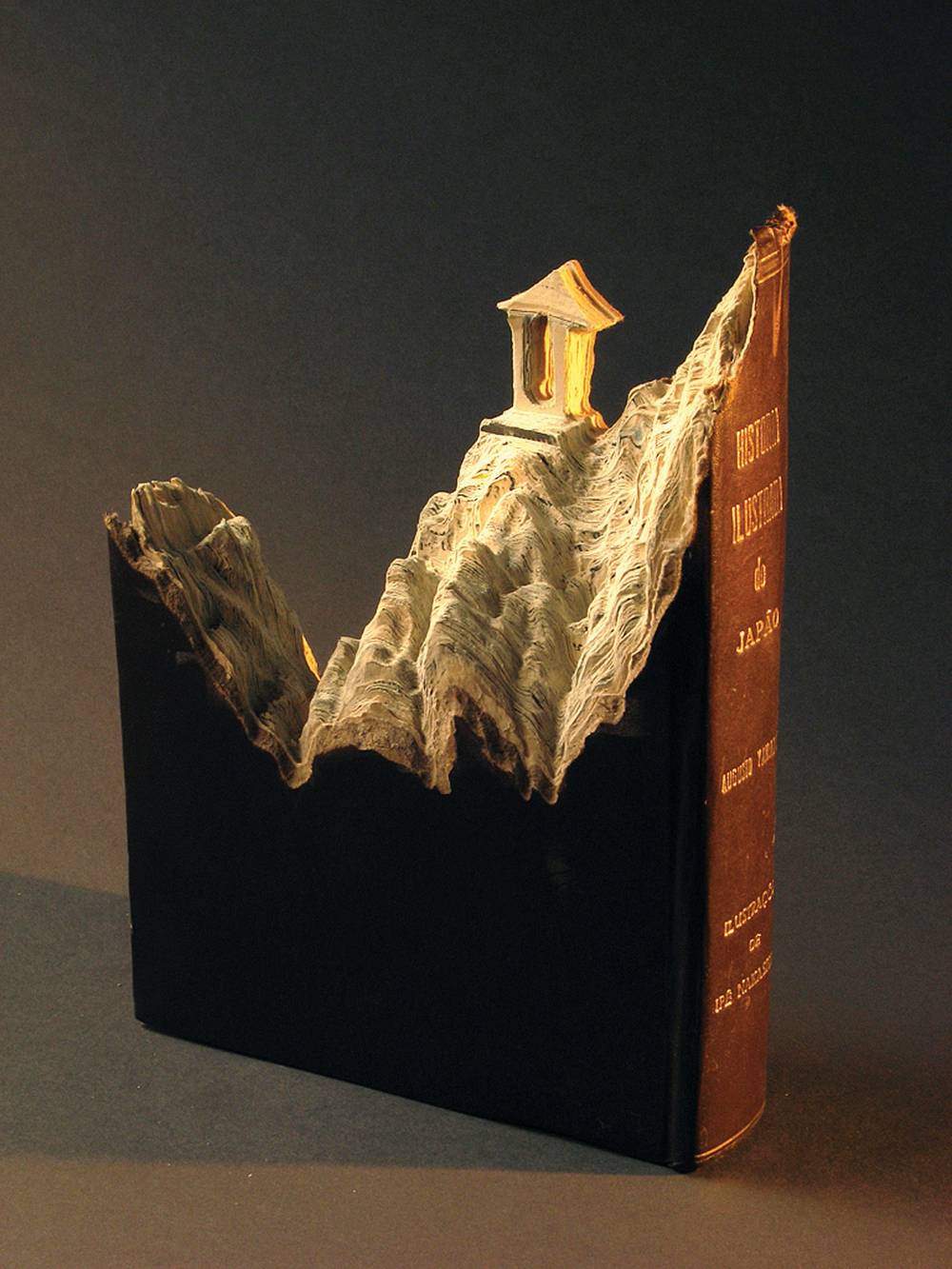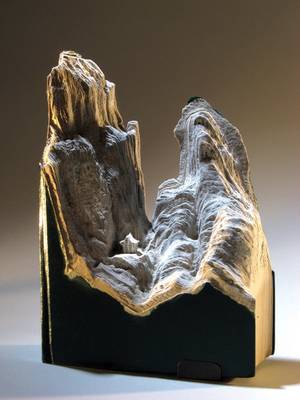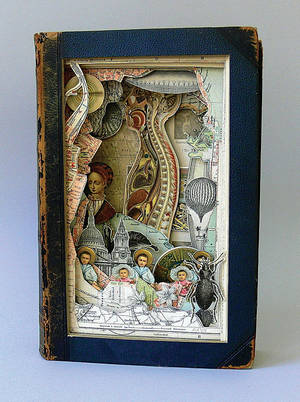What is it about a book that gives it so much power? What is it about that magical sensation of cradling a book in the hand, trembling with promise and life-changing ideas? The odd camaraderie that comes with days of attentively carrying around this object, an old friend subject to whims and fits but in reality still just a silly old book? As an object, it quite literally represents the ideas contained within—a material manifestation of an idea expressed in written form. It is history, it is testimony, it is weight. The book is unquestionably a fetish object.
That’s part of what makes Altered States: Artists Re-imagine the Book at the Reed Whipple Cultural Center seem so, well, profane. Curated by LA-based artist and designer Joseph Suldiner, the exhibition coincides with the Vegas Valley Book Festival. All of the artists use the book as a point of genesis, but there is little if any relationship between the text and the final product. Most of this work is concerned only with the book as a physical object, and the words contained within are more often than not rendered inconsequential in the transformation. The results are diverse, unexpected, sincerely thoughtful and sincerely thought-provoking
Assaulting hundred-year-old books rich with the residue of at least a century’s worth of curious hands and eyes is impactful, to say the least. Alexander Korzer-Robinson and Guy Laramee go straight for the book-fetish jugular. Laramee sandblasts, scalpels and drills his way through the pages of massive old encyclopedias to reveal Asian-influenced structures buried within the strata of a textual landscape—literally. Echoes of Italo Calvino’s Invisible Cities rumble through Laramee’s tiny temples camouflaged by mysterious paper mountain passes.
The Details

- Altered States: Artists Re-imagine the Book
- Through January 2; Tuesday-Friday, 11 a.m.-9 p.m.; Saturday, 10 a.m-6 p.m.
- Reed Whipple Cultural Center
- 229-4674
Text is meaningless in Korzer-Robinson’s treatment of antique books. The artist works page by page, meticulously removing text as illustrations are left untouched. The resulting elaborately layered shadow boxes are verdant, dazzling, and suffocating. Works like “Old Garden” and “Roman Eden” are ornately oblique. Were there ever actually words there to begin with? Images replace words as narrative symbols layer deep within the confines of the book binding in a visual narrative without beginning or end.
At the opposite end of the spectrum aesthetically, Jill Sylvia dispenses entirely with the image and any concern for the narrative weight of a collection of pages. Choosing empty ledger paper as her primary medium, Sylvia sculpts away its defined, grid-like sections. The resulting ephemeral pages float anonymously on the wall and in delicately curled elusive piles. Conceptually, Sylvia’s rigorous removal of informational components from a ledger suggests the overlap (or negation?) of labor and value. Interesting, for sure, but the aesthetic value on its own is breathtaking: The gridded perfection inherent to the ledger paper transforms simplicity into pure minimalist precision, making comparisons to Agnes Martin’s meditative grid paintings unavoidable. Gently referencing process art and drawing, the work is beautifully and systematically fragile.
Once the initial shock of the ravaged texts is over, the experience is very liberating. Having a gallery full of fearless, smart work helps. Lisa Kokin cheekily toys with book covers in “Shroud,” where the covers of Old West pulp-fiction novels titled Blood Money and Hell in His Holsters are woven together in tapestry form. Shannon Freshwater takes a more diaristic approach, filling the pages of children’s stories with charming stream-of-consciousness drawings and paintings. For her series “Edges,” Alisa Banks weaves synthetic hair into the edges of books in a sharp look at culture, identity and marginality. All while Doug Beube’s Yellow Pages birds fly across the wall.
As an unadulterated book nerd, I love the unique perversion of hosting this exhibition during a book festival. It asks us to look at the role the object “book” has played in shaping our perception of culture, history and politics—the reified status of physical information. More urgently, it asks the viewer to wrestle with the cultural significance of a sentimental object that some say is approaching dissolution thanks to the likes of the Kindle. Best articulated by the curator himself, “these altered books challenge us to re-examine the exalted, nearly sacred status of the Book within our culture and the deeply embedded values through which we regard it.” Ideas can be dangerous; centuries of censorship and book-burning are evidence enough of the cultural correlation between the book and the ideas contained within. What happens when that symbol is gone? Where will we locate the value of its meaning? Altered States is a good place to start.



Previous Discussion: